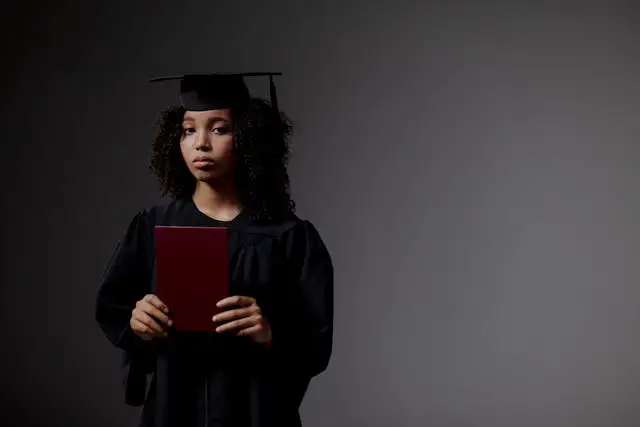
Fewer than 2 percent of high school student-athletes receive athletic scholarships, but they add up to more than $3.1 billion annually for DI and DII alone, so there is certainly money available. However, it is important to understand that most athletic scholarships are not full scholarships. How much they offer you has a lot to do with your sport and whether it is a count sport or equivalent.
Headcount (headcount) sports are always full scholarships. But they only include income sports: for men, that’s DI basketball and DI-A soccer; for women, it’s DI basketball, tennis, volleyball, and gymnastics.
Equivalency sports generally award partial scholarships. It is up to the coach to divide his scholarship money among the athletes. That could mean they offer a full scholarship to an extremely high-level recruit (although that’s rare), or it could mean they spread the money out among multiple athletes, which is much more common.
Equivalent sports for DI men include baseball, rifle, skiing, cross-country, track and field, soccer, fencing, swimming, golf, tennis, gymnastics, volleyball, ice hockey, water polo, lacrosse, and wrestling. For DI women, equivalent sports include bowling, lacrosse, rowing, cross-country, track and field, skiing, fencing, soccer, field hockey, softball, golf, swimming, ice hockey, and water polo. All DII and NAIA sports are equivalency sports.
How do you get a full athletic scholarship?
Most student-athletes do not receive a full scholarship, in fact only 1 percent do. Still, full scholarships are the goal for many athletes, as they typically cover tuition and fees, books, room and board, supplies, and sometimes even living expenses.
If you receive a scholarship to a DI count sport, you are guaranteed a full scholarship. But there are only six major sports. If you play an equivalency sport, you can increase your chances of getting more scholarship money. For example, if you play a specific and important role on the team, such as a baseball or softball pitcher, you are more likely to receive a higher offer.
You can also use the leverage of multiple recruits offers to get trainers to increase the amount they are willing to give you. Sometimes just going down a division level will get you more money. A lower-level recruit for DI could receive a larger scholarship at the DII level.
Do Ivy League schools offer athletic scholarships?
Ivy League schools do not award athletic scholarships, they only provide need-based financial aid. Coaches can help their future athletes earn financial aid rewards, but they don’t have scholarship money to give them.
In many cases, Ivy League schools can cover most of the cost of tuition; at most, families with an annual income of less than $65,000 make no contribution to the education of their student-athletes, while families with an annual family income between $65 – $180,000 could contribute somewhere between 10 and 18 percent. In other words, don’t let a lack of athletic scholarship dollars keep you from pursuing an Ivy League education as a student-athlete.
Do you have to get a scholarship to compete in college sports?
There are usually more spots available on a team than the coaches have scholarships to offer. So not getting a scholarship doesn’t mean you’re out of luck. Student-athletes can enter a team, which means trying out without receiving a scholarship.
Sometimes athletes are asked to walk in, in which case they are called “preferred walk-ons.” You can also get on a team without a scholarship one year and receive a scholarship the following year, depending on your perceived worth.
How do you know if you are eligible for an athletic scholarship?
To receive a scholarship to an NCAA DI or DII program, student-athletes must meet certain eligibility requirements in both the NCAA and NAIA leagues (each is different). They require that you meet a minimum academic standard and be considered an amateur athlete.
However, just because you meet the minimum requirements for the school you want to play at does not mean you will receive a scholarship. Your chances of an offer increase the better your academic grades are.
What happens if you receive a verbal scholarship offer?
A coach may decide to extend a verbal offer of scholarships at various points in the recruiting process. However, these offers are not binding; they are unofficial verbal contracts between a coach and an athlete. Nothing is set in stone until the student-athlete signs their National Letter of Intent.
Your student-athlete may verbally commit to an offer at any time. Keep in mind, however, that committing too soon can put your student-athlete at a disadvantage if they change their minds about a program later. If they get an offer, they should first of all thank the coach.
If the student-athlete decides to accept the offer, this is considered an oral agreement and is also not binding. It is also acceptable to ask for more time to make the decision, it depends on each case. The benefit of giving a verbal commitment is that it simplifies your recruiting process. It sends a message to other coaches that the student-athlete has made a decision so they can stop chasing them.
Can an athletic scholarship be withdrawn?
Losing an athletic scholarship is an unfortunate reality for some college athletes. There are a few different situations where this can occur:
- Most commonly, the student-athlete never had the scholarship, to begin with. Verbal agreements are not binding; they do not guarantee a place on the list or a scholarship. Even once she has signed her national letter of intent, her agreement may not include scholarship aid.
- If you are injured, depending on the school you attend and whether it happened outside of games or practice, your scholarship may be withdrawn.
- Coaches may decide not to renew their scholarship for the following year. This is not a case of the scholarship being “taken away” as they are usually one-year contracts, but it may still come as a surprise to some student-athletes. Non-renewals can occur for any number of reasons, including a new coach joining the program, getting into trouble on or off the field, poor performance, etc.
- If you’re ineligible to compete for some reason (poor academics, not in good standing at school, etc.), a coach probably won’t keep you on a scholarship.












